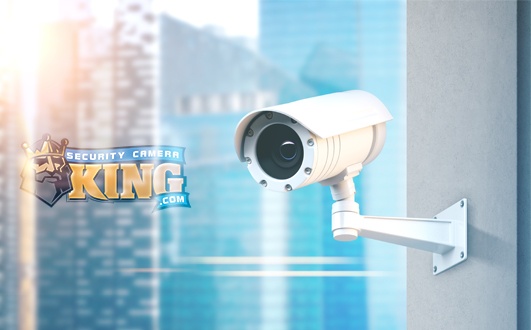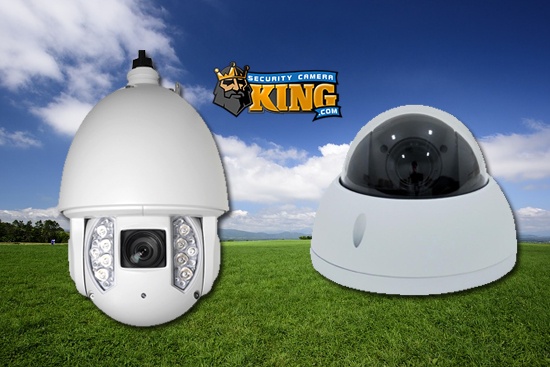“How do I add an IP camera from my network?”
Hey everyone, Joe here from SCK, and today we’re going to be answering the question: “How do I add an IP camera from my network?” First, let’s break down this question to see what’s being asked, and why you would want to know how to perform this action. First, let’s talk about some setup info you may need, and what tools you’ll need available.
Part of this process may involve initializing a camera, to which we have a guide for and will explain within this article when you would need to know this process. In order to perform the manual initialization, and adding the camera over the network, you’re going to need a Windows PC that can connect to the same network as the camera. You’ll also need the Elite Configuration Tool software. Find that link and the link to the initialization guide below. If your cam is already initialized, keep reading on.
As you may already know, IP cameras are the counterpart to COAX cameras. COAX cameras use an analog BNC cable to transmit audio and video data to a central recording system called a DVR. This is different from IP cameras because IP cameras communicate using a network cable- called an ethernet cable.
These cameras connect using a local network, or a remote network combined with the internet to communicate with a central recording station called an NVR or even sometimes a hybrid DVR. Ip cameras can connect to an NVR via multiple ways, including onboard Power Over Ethernet (POE) ports within the NVR, or over the main network, the NVR is plugged into. With hybrid DVRs, IP cameras can only use the main network the DVR is connected to, as no DVRscome equipped with POE ports. This is also the case for NVRs that do not have onboard POE.
While many times onboard POE cameras are plug and play, adding a camera over the main network can take a bit of manual configuration. For this reason, we often get asked “How do I add an IP camera from my network?” We’re going to show you how to do that today with our article and accompanying video, but there are some prerequisite info and setup you will have to have complete already for this to work.
If you have not already initialized your Elite series camera, please refer to the guide above and do so now. Once completed, or, if you’re not using an Elite Series camera, read on to begin.
Know that for any third party cameras they must be compatible with the ONVIF data transmission protocol for IP cameras and devices in order to possibly be functional. This is not a guarantee of compatibility, and in fact, no third party device is 100% guaranteed to work. Your third party camera may need additional set up, and if after following this guide you have trouble, contact your camera’s manufacturer for further assistance.
“How do I add an IP camera from my network?” – The process
Now, once your Elite Series camera has been initialized, you’re going to want to make sure that this camera has been given an IP address that will not conflict with any devices currently on your main network. Usually, this happens by default as most of the time the camera will set itself to DHCP, and grab an IP address from your network’s router. However, this may not occur. You can use the config tool to change the IP of the camera- but first, you’ll need to determine an IP address that’s free, to do this, open a command prompt on your PC by hitting the windows key on your keyboard or clicking on the start menu. Within the field, type CMD and hit enter. In the window that pops up type IPCONFIG and hit enter. Take a look at the default gateway and subnet mask. Write these values down.
The IP address of your camera has to match the first three sets of numbers as the default gateway, but have it’s own unique forth set. For example, if your default gateway is 10.0.0.1, then your camera needs to have an IP address of 10.0.0.x to be in the correct IP scheme. Where the X is, you can put any value from 2 – 254 that isn’t already used on your network. To test an IP address to see if it is available, and not in use type
Ping followed by the IP you want to test.
Using the above example, if you wanted to test 10.0.0.25 would then type ping 10.0.0.25 and hit enter. Watch the results of this ping. If the result returns a response time, the IP is used and you’ll need to test another. If the return is something along the lines of “unreachable”, or “not found” that means the IP is free to use. Write down the IP you chose alongside the default gateway and subnet mask.
Once you have a free IP address, go to the config tool and click the search setting Gear icon. Inside the password field, make sure the password matches what your camera’s password is, then hit ok. The search will ‘re-search”. When it finishes, click the Pencil next to your camera. Here, edit the IP address so it matches the one you chose. Edit the default gateway to exactly match what you wrote, and the same with the subnet mask (almost always 255.255.255.0)
Then click save/ok. Now your camera has an IP on the network and is ready to be added. You can now go to your recorder, or go to the recorder’s web interface via its IP address from internet explorer.
Once logged in, navigate to management, and then Camera. From here, select the registry,. You can try to do a search and see if the recorder finds the camera from the network, if it does you can simply add- but make sure to edit the entry to give it the correct password.
Or, simply manually add the camera like so- put in its IP, password, and hit ok.
If the camera is a third party you’ll have to change this field from private to ONVIF- and add in its IP and password.
Once done give the registry a second, or refresh a few times and you’ll see the camera added.
Thanks for joining us today as we covered the question “How do I add an IP camera from my network?” For more tutorials please check out our youtube channel, and for any sales questions give us a call at
561-288-5258 today!
Related: What’s the difference between DVR and NVR?
Related: What’s the difference between H264 and H265?
Related: IP PTZ Security Cameras – All There is to Know
Related: Resolution, and why does it matter?
Related: What are active deterrence cameras?
Find Us On: Facebook | Twitter | YouTube
!












